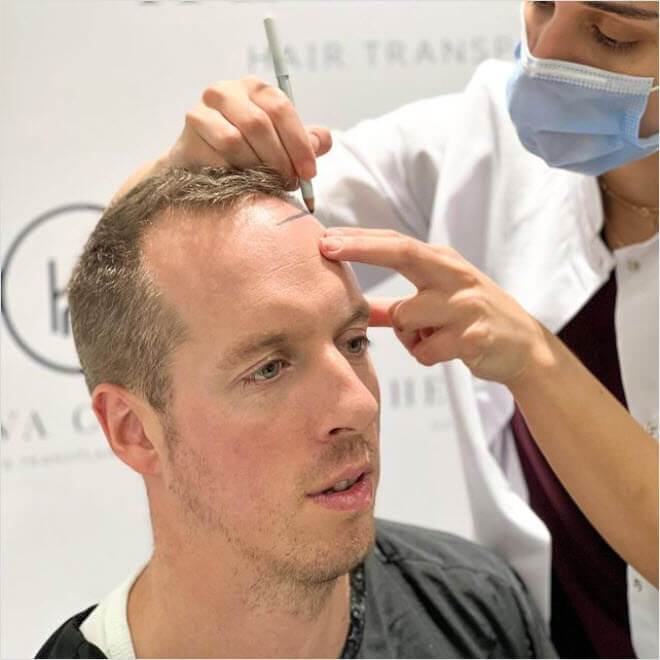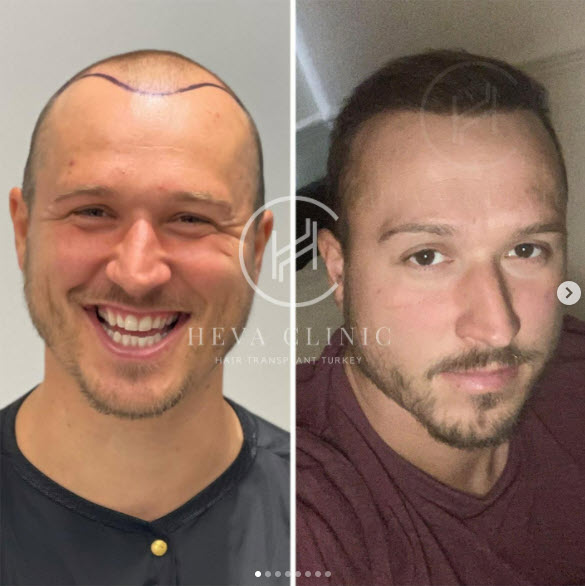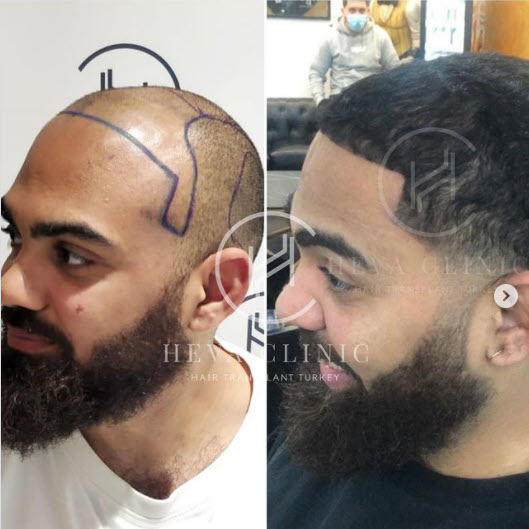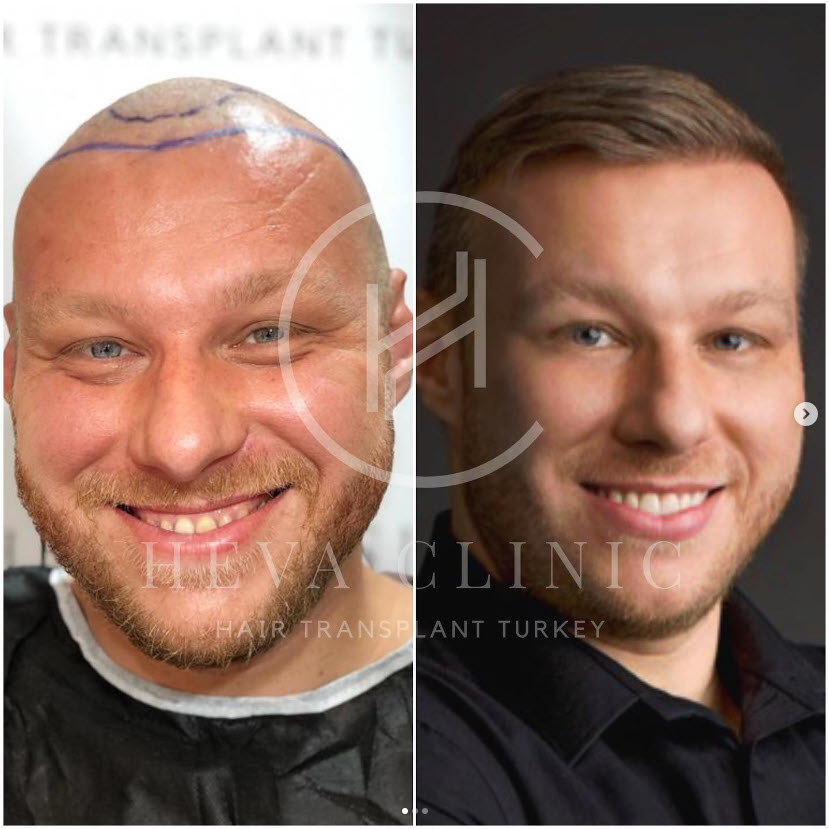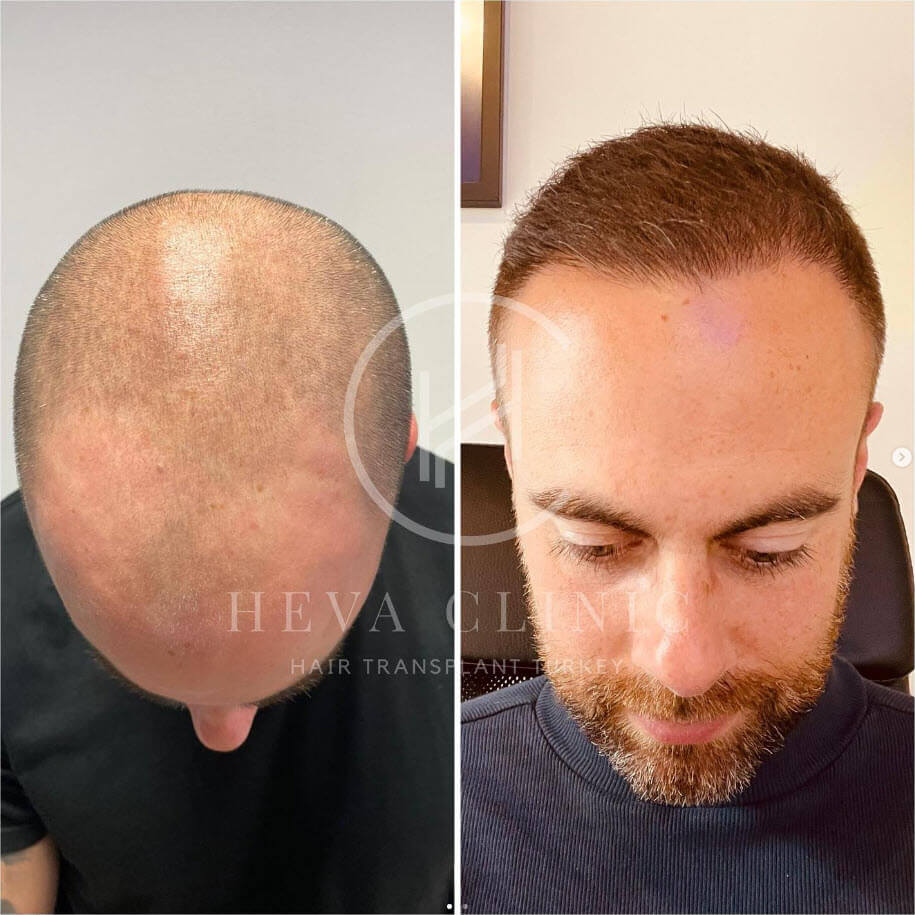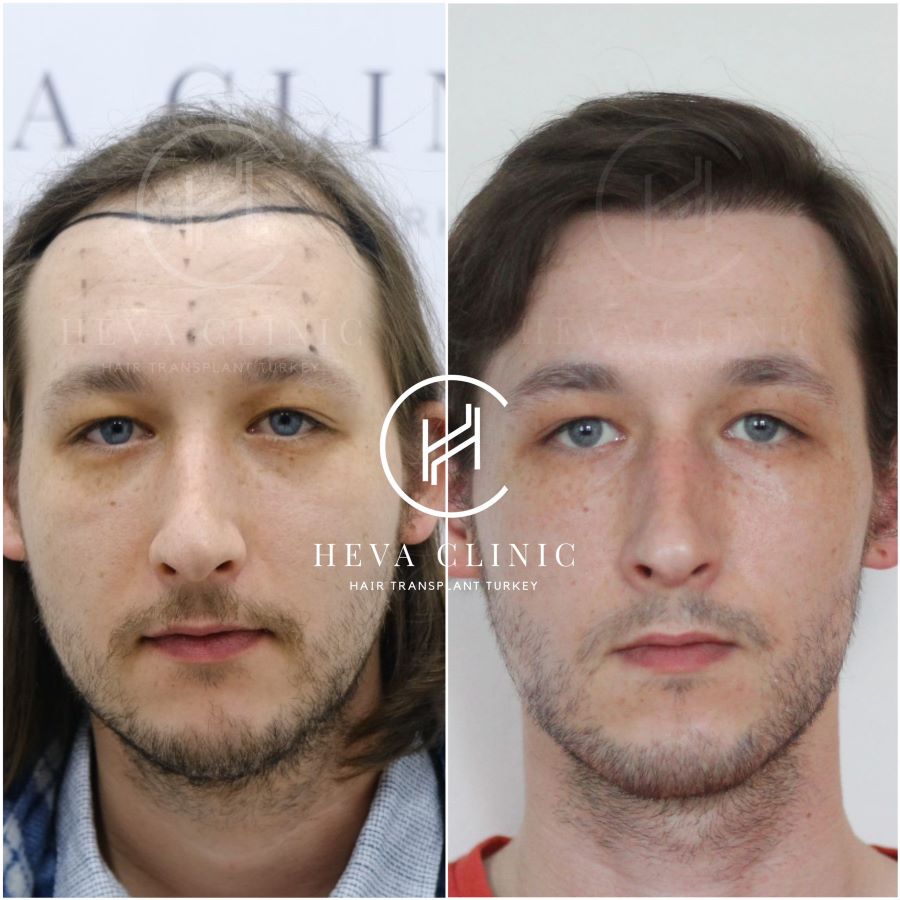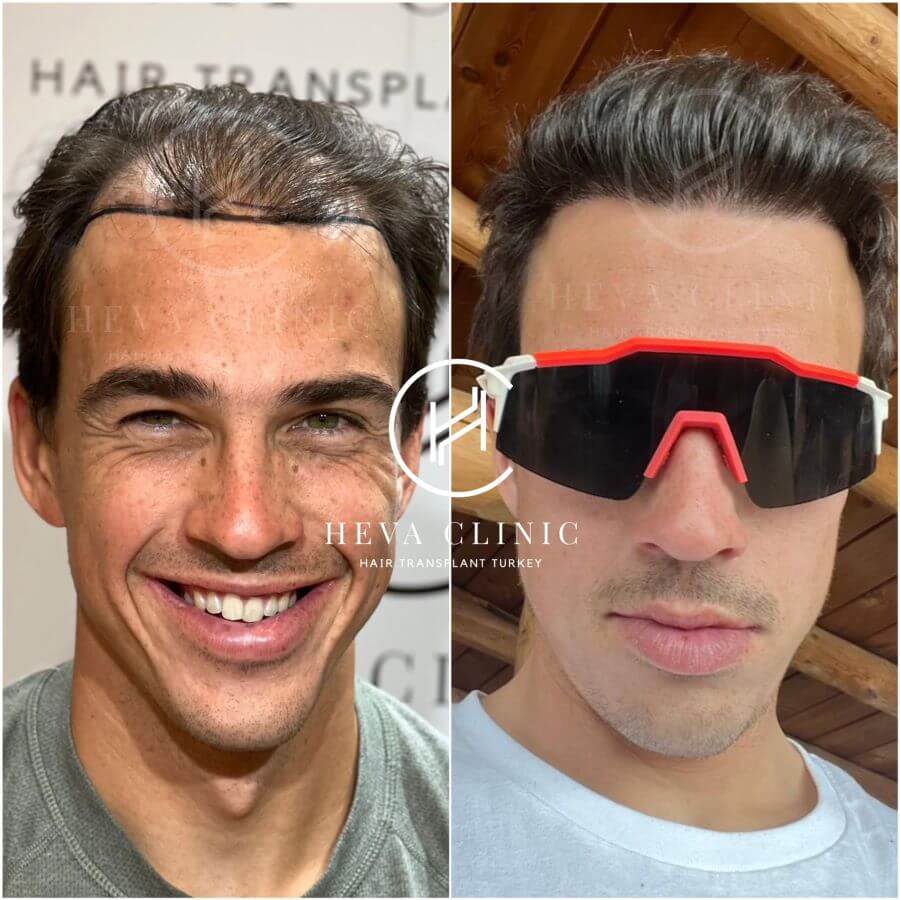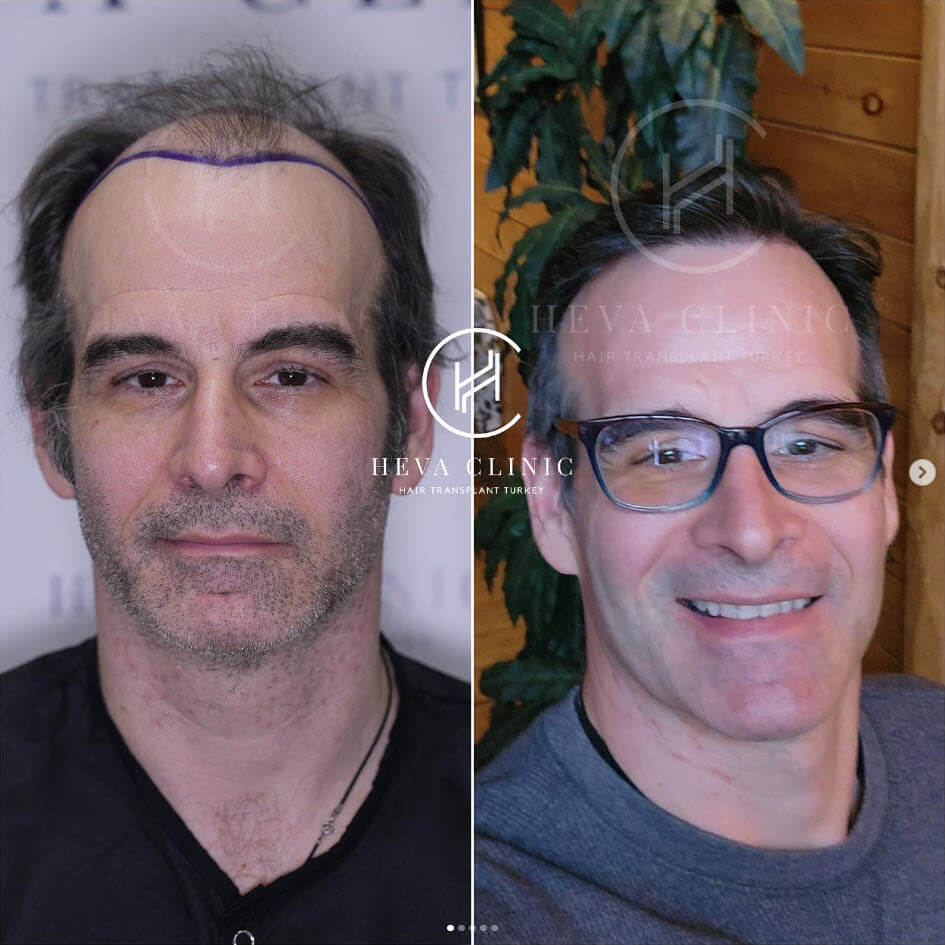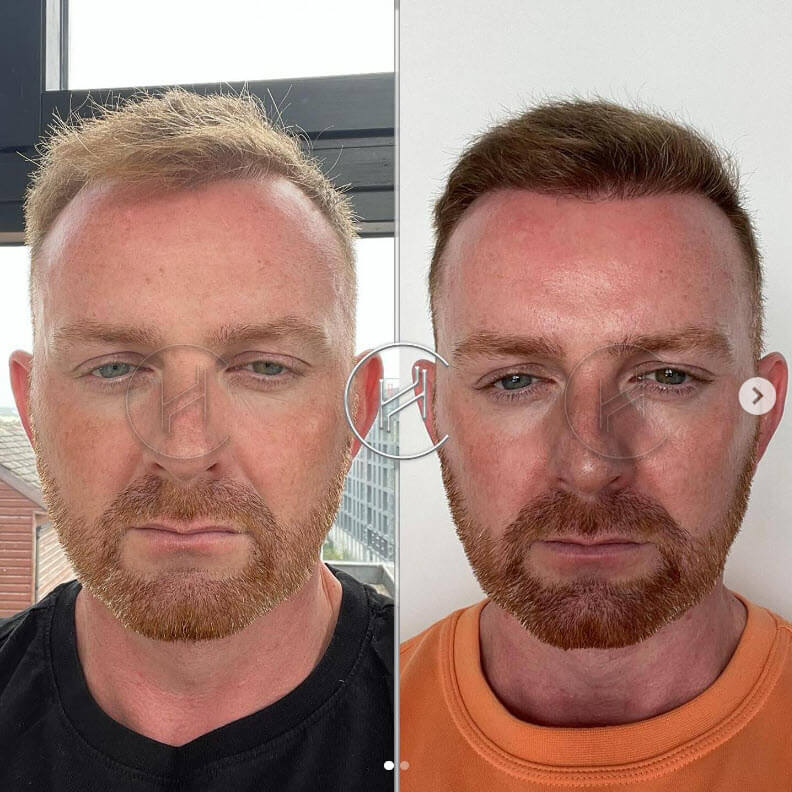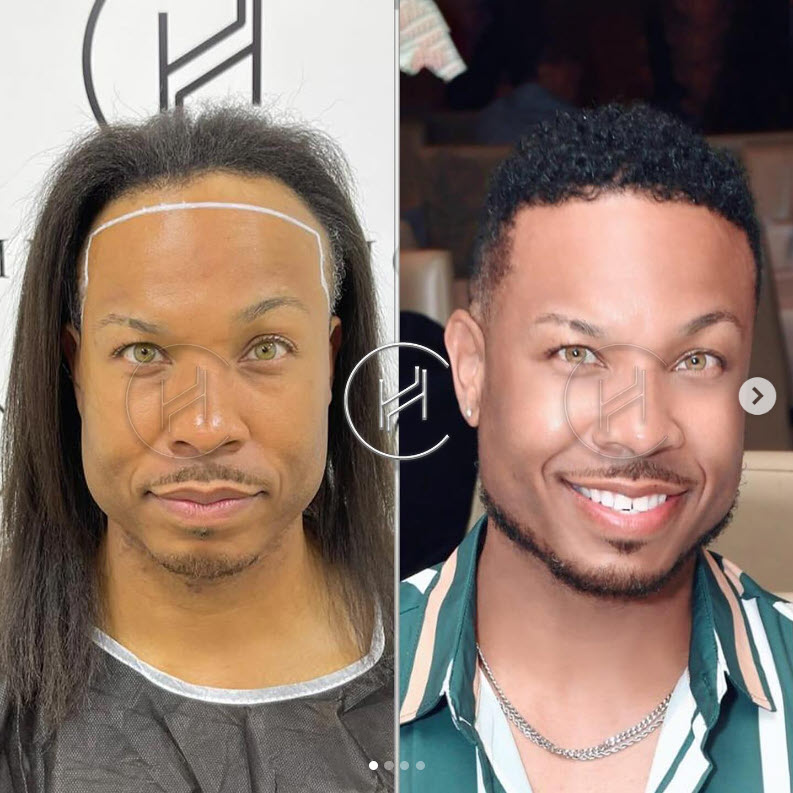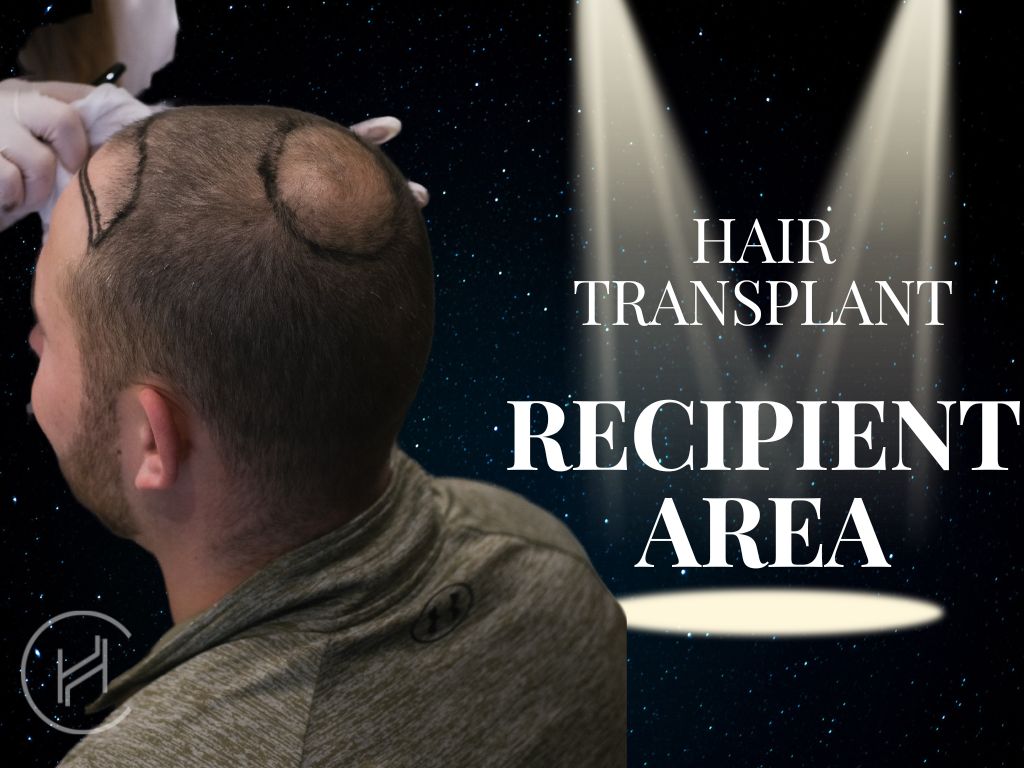
To apply the right treatment, it is very important to perform a sensitive transplant procedure to the recipient area. Let’s understand more about the recipient site.
We will cover these topics in this article:
A hair transplant surgery is a commonly performed procedure to treat the negative effects of androgenetic alopecia in both genders in Turkey. Hair restoration treatment has two main terms: donor area and recipient area.
You can simply think of the hair transplant donor area as the place where the hair grafts are harvested.
On the other hand, the recipient area is where these grafts are carefully planted like seeds to grow new hair. It refers to the frontal and the vertex area in general. These sites are prone to hair loss; therefore, to achieve proper hair coverage, they need to be filled with transplanted hair.
Let’s analyze all hair transplant zones one by one!
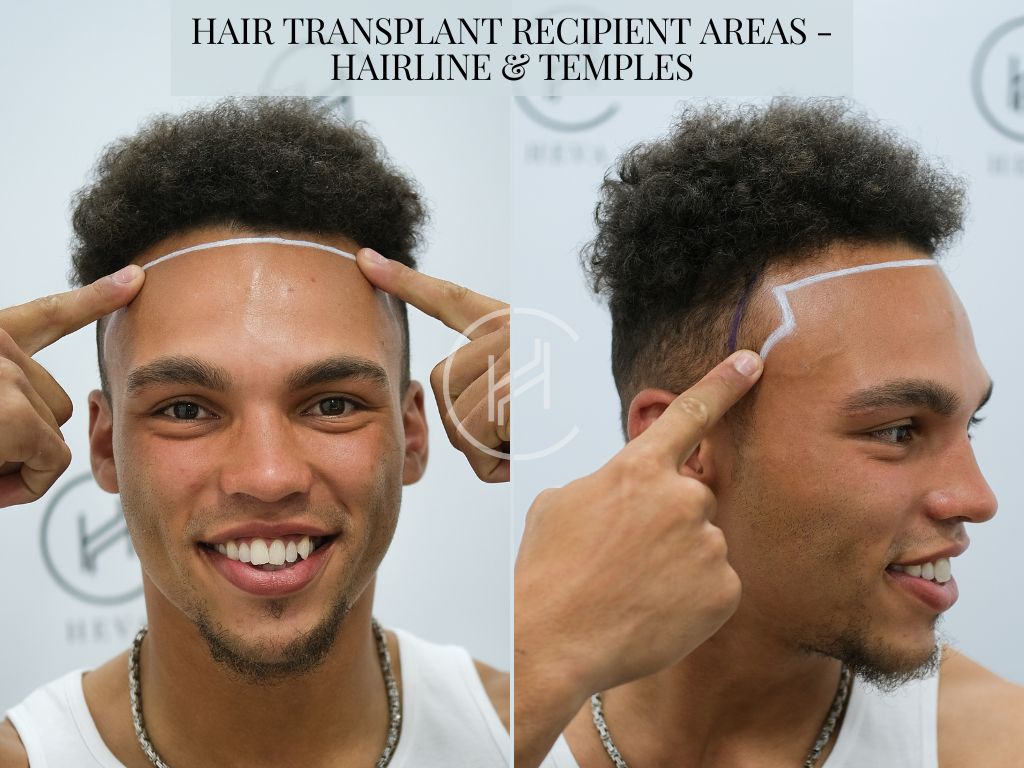
Temples
Hair loss at the temples is very common among people suffering from male pattern baldness. Usually in the early stages of baldness, the hair on the temples becomes sparse and spindly. If you’re wondering why your hairline is receding at the temples apart from androgenic alopecia, causes can be those:
Your hair transplant surgeon will first analyze the reasons behind your hair loss and then make a plan for a specialized hair transplant procedure for you.
If you’re seeking to restore the hair loss around the temples, you can take a look at our range of hair loss treatments that are designed for excellent results. You can have a more confident and youthful look, whether you desire a non-invasive hair loss treatment or a hair transplant technique.
Hairline Zone
Hairline has a huge impact on the facial appearance of a person. To prevent any further hairline recession, you may use some medications. At certain points, they can be beneficial. However, if you are experiencing situations such as:
You may need a hairline hair transplant.
If you are an individual between the ages of 20 and 30 who does not use hair loss medications; you may consider waiting until your hair loss is stabilized. Otherwise, if you keep losing your natural hair, you may need to undergo a second hair transplant procedure.

Crown Area
Typical frontal hair loss and vertex hair loss are common in men. On the Hamilton Norwood Hair Loss scale, crown (vertex) hair loss begins with vertex III type and goes all the way up to vertex VII. The best technique for treating hair loss in the vertex area is crown hair transplantation. Thinning in the crown area is often an earlier symptom of male pattern balding.
In the earliest period, crown shedding manifests itself in two ways:
Design and restoration of crown hair loss is a little different than the middle and frontal parts because the angle and the direction of hair growth are varied. After crown hair transplantation, it is possible to observe neovascularization around the transplanted grafts within 3 to 6 months.
Why are Recipient Sites So Important?
The process of creating the recipient sites affects the distribution, angle and proper size of each graft. When they are poorly created, the distribution and angle of the hair may not have a natural appearance. The surgeon’s aesthetic understanding is very important in this process because the surgeon should make designs suitable for the person’s hair loss type, face profile and considering existing hair amount of donor and recipient areas.
The surgeon should create the hairline appropriately in the shape of the face and design different parts of the scalp, taking into account the growth of the hair. The number of grafts required for each part of the head such as the mid scalp, hairline, temples, vertex, lateral hump, graft angle, etc. are different, and an experienced clinic’s medical approach can help you achieve superior results.
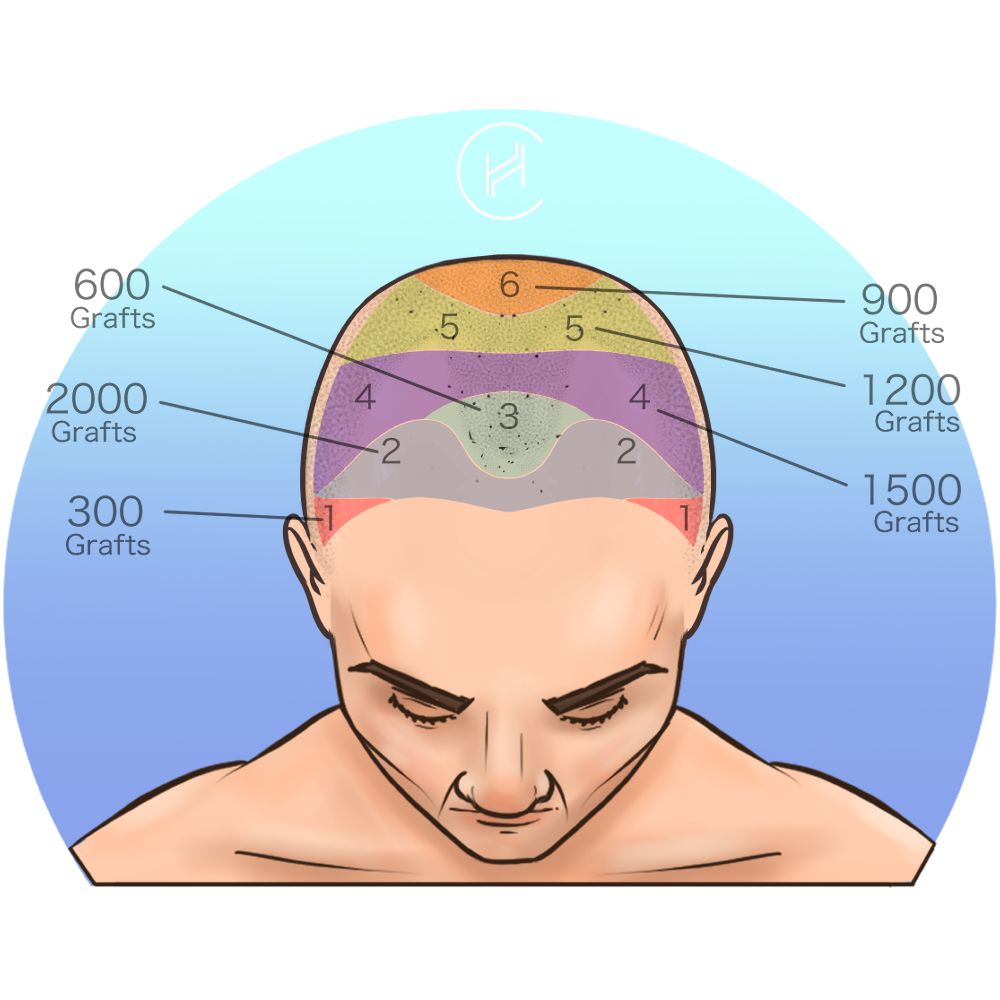
What is the donor area for hair transplant?
The area where hair follicles are obtained for implantation is called the donor area. Generally, this area is the back of the head, between the ears as in the image below.
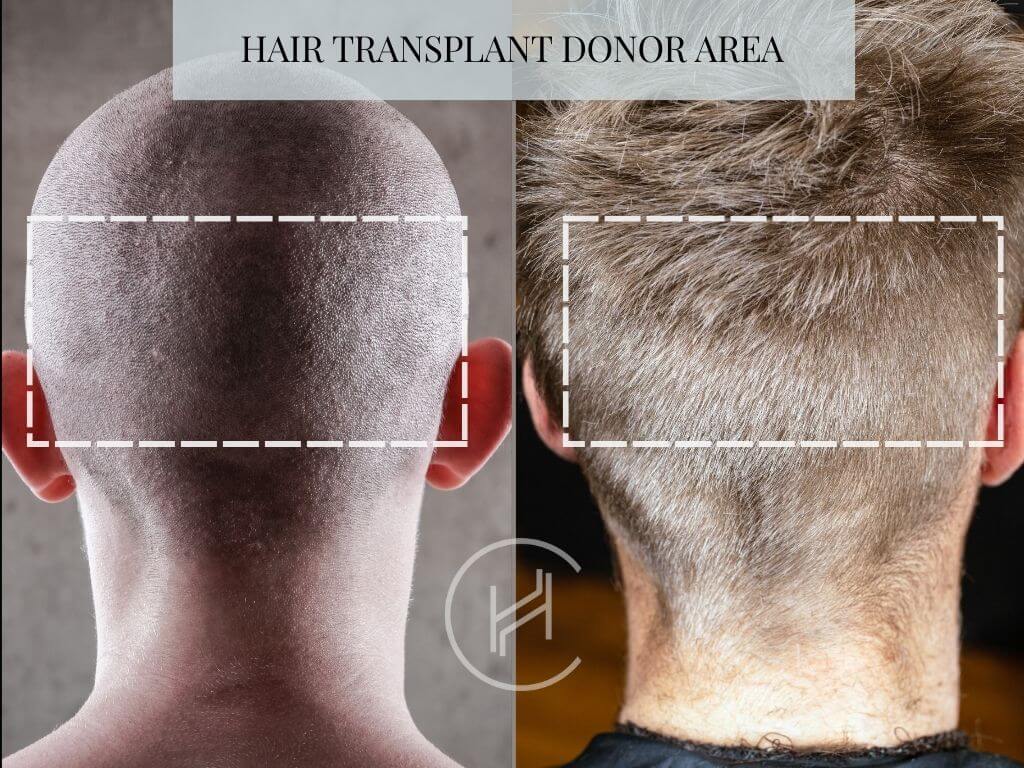
There is a correlation between both the quality and quantity of hair follicles in the donor area and the success rate of hair transplantation operations. [1]
The back of the head gives the most natural-looking results because it has a high amount of healthy hair follicles. In some special cases, this part may not provide full head coverage for the operation, and in some less-frequent cases, surgeons can use beard and body hair to add density for the hair transplant procedure. Regardless of the number of hair grafts and utilization of other donor areas, experienced surgeons must complete the operation without over-harvesting the donor areas
Frequently Asked Questions
Is numbness in the recipient normal after hair transplant?
Hair restoring surgery has a very promising side as well as very few complications. These complications include symptoms such as numbness, redness and mild pain. Some studies have found numbness (paresthesia) in only about 10% of patients who had a hair transplant with the follicular unit transplant technique (FUE).
Numbness can be felt both in the donor area and in the recipient area. It usually does not require any medication and goes away within a few months after the procedure. The researches also demonstrate that raised scar, pruritus, excessive bleeding, and hiccups were also seen in a very small number of patients. [2]
How long does the recipient area stay numb after hair transplant?
The scalp is filled with many small branches of nerves that provide great sensitivity to the scalp. When an incision is made in the skin, it can cause trauma to the nerves and it can take some time for the nerves to heal. In fact, if a nerve is damaged during surgery, it will regenerate and become fully functional within a few months. Sensation returns to normal between 2 to 6 months after a standard hair transplantation technique. It can last up to 6 months and gradually decreases after 2 months.
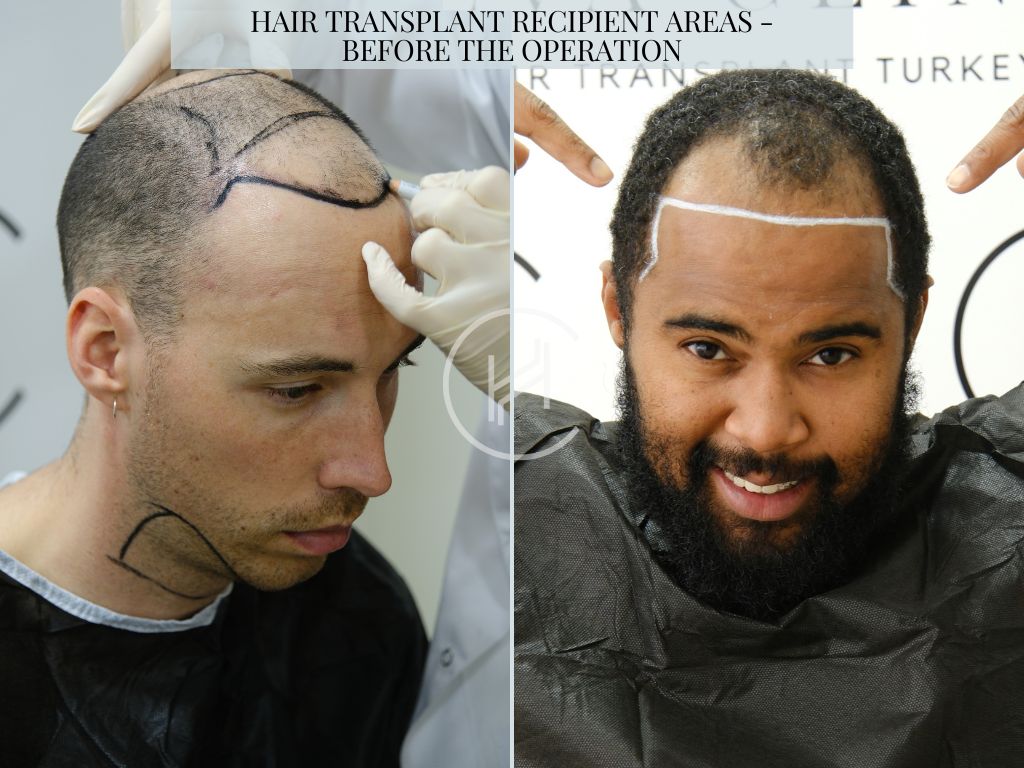
How long does hair transplant redness last on the recipient area?
One of the complications that occur after hair transplantation is redness. Depending on the patient’s constitution, redness may vary after treatment. It naturally disappears 2-3 weeks after the hair transplant procedure. Some patients may experience redness for a while more. In extreme cases, people with very pale or sensitive skin may experience mild redness for up to 2-3 months.
If the redness after hair transplantation develops into an increasingly allergic reaction or persists after more than 2 months, you should inform your doctor directly.
Is it normal to feel pain in the recipient area after hair transplant?
Mild discomfort and swelling may occur for several days following hair transplantation surgery. Some individuals may experience difficulty sleeping during the initial week. Pain may be more noticeable at the donor site compared to the recipient site, and soreness is common during the recovery process. Over-the-counter pain relievers provided at the clinic can alleviate post-operative pain. If you experience severe or unusual pain, please contact us or your doctor for guidance.
Does the hair transplant recipient area get itchy after the operation?
Shortly following a hair transplant procedure, many clients often experience a strong desire to scratch or itch their scalp. However, this sensation is a normal part of the healing process for both the donor and transplant areas, stemming from the hair removal and transplantation procedures.
While the skin tissue is repairing, the scalp releases histamine, which may cause itching. It is very important to avoid scratching or itching the scalp after a hair transplant.
Is it normal to have pimples/acne on the hair transplant recipient area?
After undergoing a hair transplant operation, the patient should consider some side effects. However, these are temporary and specific recommendations will be made by our hair transplant surgeons in Turkey to reduce them. The most common side effects of hair transplantation surgery include: swelling in the area of hair transplantation, pain, micro wounds (scar tissue), and pimples.
Pimples on the scalp, medically called folliculitis, are potential side effects of FUE hair transplant. They are a good sign because they indicate that hair growth is taking place under the scalp. When the pimples burst, the hair follicle may fall out and this is very normal.
In our clinic, hair loss in that area is not permanent because the follicles that fall out after hair transplantation grow back within 3-4 months with other hair follicles transplanted to the recipient area.
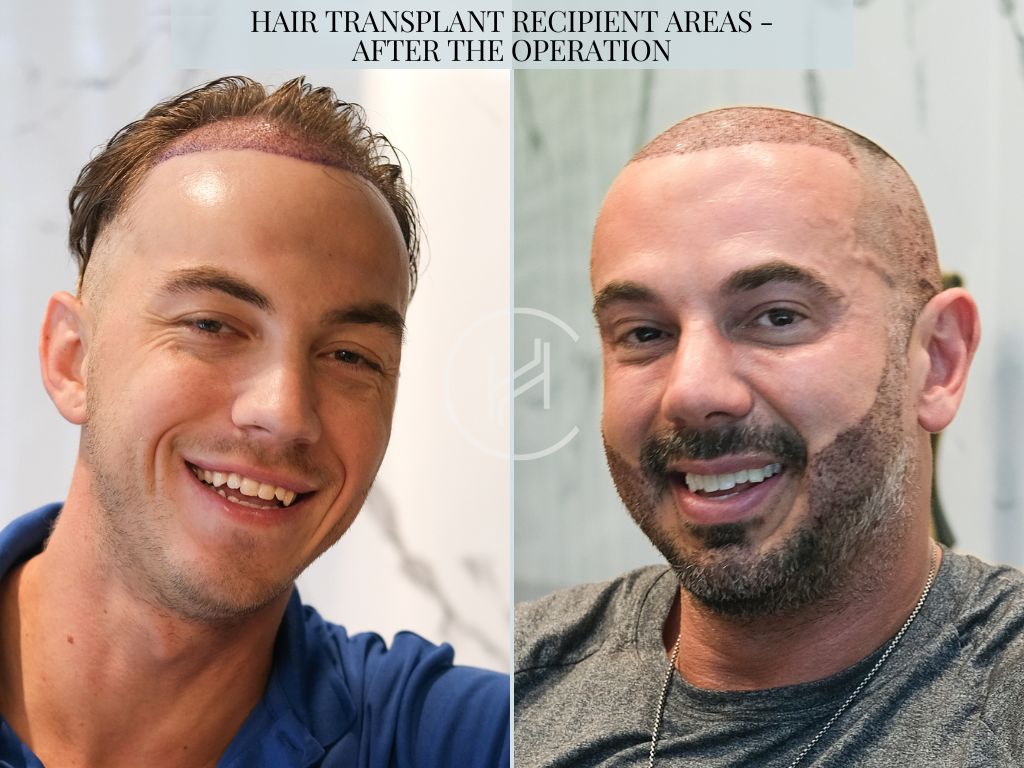
How long does a hair transplant recipient area recovery take?
Your medical their team will share with you the estimated hair transplant recovery timeline and the points you should pay attention to after surgery. You should listen carefully to these recommendations to recover as soon as possible. The followings are usually made:
- Do not wash your hair by yourself on the first day.
- After a certain period of time, you can wash your hair with the recommended shampoo. Baby shampoos are usually recommended. (don’t worry about shock loss)
- In the first ten days you will be mostly healed and you will be able to go about your daily life. However, you have to be patient for 2 months to recover completely.
- For the final result, you should wait between 10 months and 1 year.
Can I use aloe vera on the recipient area after hair transplant?
Do not use any medicines except those recommended by your doctor to avoid unnatural look and side effects. Shampoo your hair with a natural shampoo. Do not rub your fingers on the transplanted hair and do not itch the area. You should keep both the recipient and donor area moist because this helps hair growth. You can use Aloe Vera gel or Emu Oil recommended by your doctor to speed up the healing process.
Is it possible to have a hair transplant without shaving the recipient area?
One of the most common concerns for those considering hair transplantation is often the need to shave all of the hair. Since our hair plays a direct role in our beauty and image, it’s normal to have such questions. So, can hair transplantation be done without shaving the hair? The answer is yes. It is possible to undergo a successful hair transplant without shaving all of your body hair. Unshaven FUE is an alternative solution for individuals who wish to return to their work and social lives quickly without having to cut their hair short. Also, Heva Clinic provides completely no-shave hair transplant, which you do not shave your donor and recipient area. Click here to read more about completely no-shave hair transplant or reach our medical consultants for further information.
Find your hair transplant clinic in Turkey!
Experience your hair restoration journey at Heva Clinic, the world’s premier hair transplant hub in Istanbul. Contact our clinic with a professional health team 24/7 via WhatsApp, phone call, or email.
Sources
- What Is The Overharvested Donor Area In Hair Transplant? Heva Clinic. Accessed March 15, 2024. https://www.dentalhairclinicturkey.com/blog/what-is-donor-area-in-hair-transplant/
- Loganathan, Eswari; Sarvajnamurthy, Sacchidanand; Gorur, Divya; Suresh, Deepak Hurkudli; Siddaraju, Maheshwari Nallur; Narasimhan, Revathi Thimmanhalli. Complications of Hair Restoration Surgery: A Retrospective Analysis. International Journal of Trichology 6(4):p 168-172, Oct–Dec 2014. | DOI: 10.4103/0974-7753.142861

